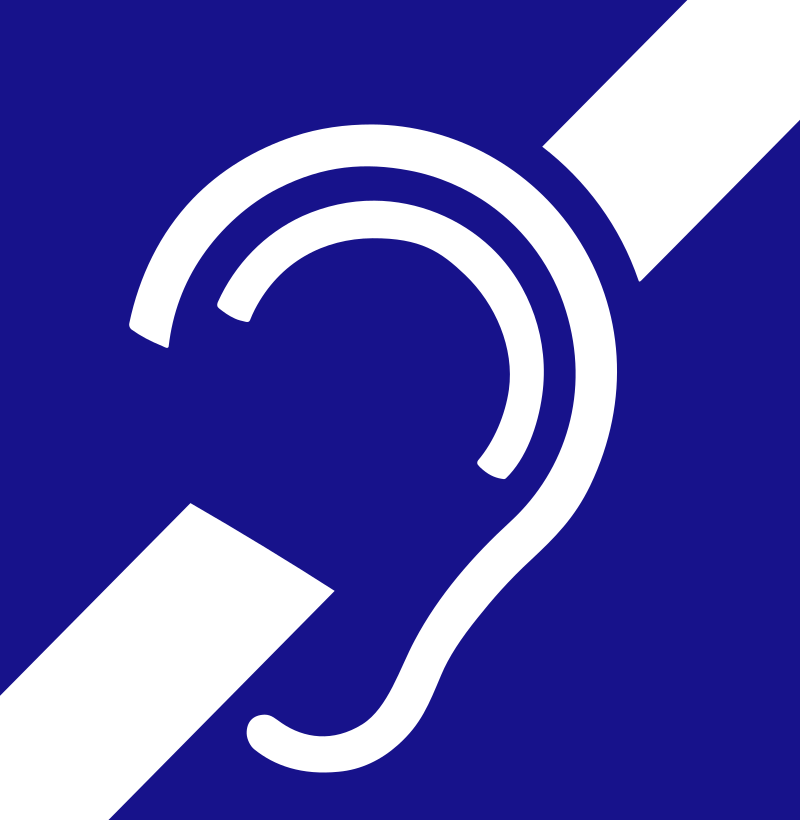
Image Source: U.S. Access Board
Accessibility symbols for deafness carry significant cultural meanings, reflecting both the services available and the rich Deaf identity. The design and behind story of these symbols have evolved over time, shifting toward portraying disabled individuals as active participants in society. This transformation highlights a growing awareness of inclusion. However, advocates continue to discuss how these symbols can better represent the full spectrum of Deaf life. Exploring the accessibility symbols for deafness design and their behind story fosters greater respect and understanding of their purpose.
Key Takeaways
-
Symbols for deafness show Deaf culture and identity, helping inclusion.
-
Advocacy created clearer symbols, helping Deaf people in public places.
-
The Deafness Symbol and 'ear with slash' icon are important designs.
-
Technology improves symbols, making communication easier for Deaf people.
-
Designers, Deaf advocates, and tech experts work together to make symbols show Deaf experiences.
Historical Background of Accessibility Symbols
Early Representations of Deafness in Public Spaces
Long ago, public spaces ignored Deaf people's needs. Early symbols for deafness were unclear and confusing. Signs often used simple pictures that didn’t explain much. For example, some signs just showed an ear without meaning. These designs didn’t think about Deaf culture or identity. They also didn’t help Deaf people find their way in public places.
Advocacy and Standardization Efforts
Advocacy helped improve symbols for Deaf accessibility. Deaf groups worked hard for better designs. They wanted symbols to be clear and fair for everyone. In the mid-1900s, rules for these symbols became more common. Global organizations made guidelines for symbols everyone could understand. These efforts made sure symbols showed Deaf values and culture.
Milestones in Symbol Evolution
The history of these symbols has important moments. One big step was creating the International Symbol for Deafness. This symbol made it easy to show services for Deaf people. Another key design was the "ear with a slash" icon. It became a global sign for hearing loss. Over time, Deaf people gave feedback to improve these symbols. Each change made them more inclusive and respectful. The symbols keep changing to fit today’s needs.
Key Stories Behind Iconic Symbols
The International Symbol for Deafness
The International Symbol for Deafness is easy to recognize. It shows an ear with sound waves, symbolizing hearing and talking. This symbol helps people find places and services for Deaf individuals. Its creation was a big step for accessibility design. Advocates worked hard to make it simple and meaningful. The universal design breaks language barriers and supports inclusion everywhere.
The "Ear with Slash" Icon
The "ear with slash" icon is another important symbol. It shows hearing loss with a line crossing an ear. You see it in places where sound communication is not used. Its clear design makes it easy to understand for everyone. This symbol shows the effort to make designs useful and respectful. It also reminds us how important accessibility is in public areas.
Contributions from Deaf Designers and Artists
Deaf designers and artists have shaped these symbols. Their work shows the values and culture of the Deaf community. For example, Helen Keller inspired people to see Deaf individuals as strong and capable. Thomas Hopkins Gallaudet and Laurent Clerc helped with Deaf education and ASL. Their work influenced how Deafness is represented. These symbols are more than pictures—they tell stories of strength and progress.
Cultural Impact and Representation
Teaching Respect and Awareness with Symbols
Symbols for deafness do more than show services. They help people learn about Deaf culture and community. Seeing these symbols in public reminds you to think about Deaf people's needs. They also teach respect for differences. For example, the "ear with slash" icon shows hearing loss and explains communication differences. These symbols connect people and promote inclusion.
Designs That Show Deaf Culture
The look of these symbols shows Deaf identity. Each part, like the ear or sound waves, has meaning. Designers add features like gestures to show communication. These choices highlight how Deaf culture values visual ways to express ideas. By learning about these symbols, you see how art and culture mix. This makes the symbols more than signs—they honor Deaf identity.
Challenges to Global Understanding
Not everyone knows these symbols yet. In some places, old or unclear designs cause problems. This makes it harder for Deaf people to access services. Language and cultural differences also slow global understanding. To fix this, you can support better designs and awareness. This helps make sure symbols for deafness are known and respected everywhere.
Modern Innovations and Future Directions
Technology-Driven Accessibility Symbols
Technology is changing symbols for Deaf accessibility. Tools like captions and visual alerts help communication. These tools make life easier for Deaf people. For example, captions for small groups improve understanding. They work in different places to include Deaf users. In gaming, developers create features for Deaf players. A study on Valorant shows how these features help. These examples show how technology improves symbols to be more helpful.
Intersectionality in Symbol Design
Symbols should show the many experiences of Deaf people. Intersectionality means thinking about different identities together. Some symbols now include parts for multiple identities. For example, designs may connect with Deaf people in other groups. Research supports this idea with special user tests. A study in Slovenian Sign Language shows how this helps Deaf users share needs. This progress shows why intersectionality matters in symbol design.
Collaborative Efforts for Greater Inclusivity
Teamwork is key to making better accessibility symbols. Designers, Deaf advocates, and tech experts work together. They make sure symbols fit the community's needs. One example is a tool for Deaf users to share feedback. This tool helps check if symbols work well for them. Projects like this show teamwork’s importance in accessibility. By including many voices, symbols can show all Deaf experiences.
Accessibility symbols for deafness share important stories about culture. They show how far we’ve come in representing Deaf people. These symbols are not just signs—they connect Deaf and hearing communities. They help people understand and include each other.
Note: Symbols change over time. Supporting new ideas and teamwork helps them stay useful. By learning about these symbols, you help create a world where everyone is valued and included.
FAQ
What do accessibility symbols for deafness do?
These symbols show places, services, and tools for Deaf people. They help Deaf individuals move around public spaces easily. Symbols also teach others about Deaf culture and how they communicate.
How do symbols show Deaf culture?
Symbols use pictures like ears, sound waves, or hand signs. These designs show how Deaf people use visual ways to communicate. Learning about these symbols helps you understand Deaf values and identity.
Why are universal symbols needed?
Universal symbols work everywhere, no matter the language. They help Deaf people find services without confusion. When symbols are the same worldwide, they bring understanding and respect between cultures.
How does technology make symbols better?
Technology adds things like captions and visual signals to symbols. These updates make symbols easier to use and more helpful. For example, video games now have features for Deaf players, making games more fun for them.
How can you help improve accessibility symbols?
You can support better designs and teach others why they matter. Giving feedback on symbols helps designers make them better. Working with Deaf advocates ensures symbols meet the community’s needs.


